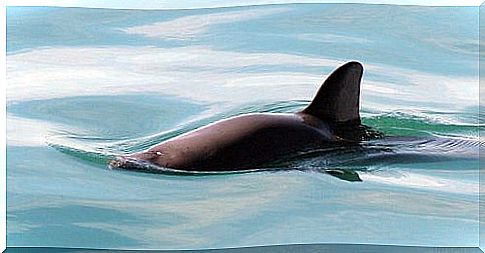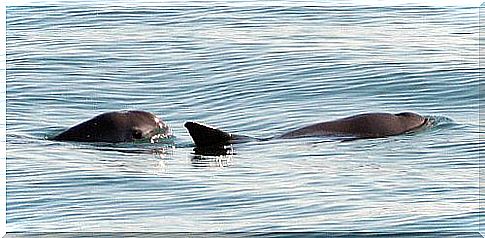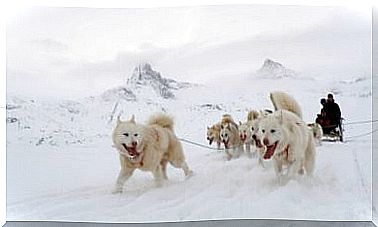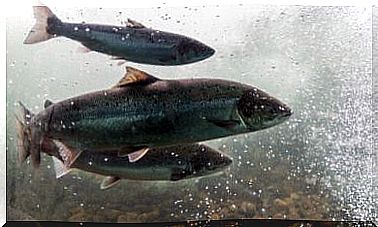Vaquitas Recovery Plans Fail

The vaquita is a dolphin-like cetacean that lives in the Gulf of California (Mexico). Long ago it was warned that their population was getting smaller and smaller, and 40 years ago the plans for the recovery of the vaquitas began. These have not yielded the expected results and the vaquita is in critical danger of extinction.
Characteristics of the vaquita
The vaquita is a marine mammal, an ododenthus cetacean that lives only in the Gulf of California, in Mexico. Specifically, it lives in the shallower waters and rarely goes far from the coast.
It is one of the smallest cetaceans in the world, whose specimens are usually over 150 centimeters long and weigh at most 50 kilograms. We can say that the largest animals that populate our planet are cetaceans such as blue whales, although we can appreciate how surprisingly small vaquitas are, very similar in this sense to dolphins.
Regarding their appearance, it should be noted that they are dark gray on the upper part of the body, which becomes lighter until it reaches the white belly. In addition, they have proportionally larger fins than other cetaceans and their lips have a very characteristic shape.
With regard to their behavior, it is very difficult to see them in the wild: they barely surface for a moment to breathe and submerge again. If we look at their diet, vaquitas are predators: their diet is based on fish and squid, and they locate their prey thanks to their echolocation systems.
The story of the vaquita’s recovery
Forty years ago, the first warning was given to the danger they were running and the first recovery plans for the vaquitas were put in place. However, it was during the 1990s that the species was declared endangered and efforts from around the world joined in to prevent the tragedy.
As they are shy and spend most of their time submerged, it is difficult to study this cetacean. The size of the population has always been estimated: in 1997 it was said that there were 560 vaquitas, while in 2000 it was pointed out that only between 100 and 300 lived.
On the other hand and, in the first place, the Gulf of California has been classified as a Biosphere Reserve, to later be named the Vaquita Refuge Area. Since 2013, many other actions have been carried out to save it: changing the professions of the fishermen that cause the deaths of many vaquitas, trying to promote observation tourism, etc.
Already in 2017, the most desperate vaquita recovery plan was launched, as it was said that only 30 were left alive, with the idea of capturing all the remaining vaquitas and protecting them in captivity . In this way, they would try to make them reproduce and, when the population increased, they would release them again, although this alternative has also failed.
The failures of the vaquitas recovery plan
However, none of the plans have worked. Local fishermen who have changed jobs have failed and gone bankrupt; while, for its part, observation tourism has not been successful, with income below expectations.
The point is, very little is known about vaquitas. In fact, the level of docility of these animals was unknown and if they would support being in contact with humans, and the implementation of the plan was a desperate measure that had to be done almost blindly.
The first two that were rescued into captivity have shown us that they could not survive: the first was a baby that would die without the care of its mother. The second has died during the transfer to the facilities; it is assumed that due to the stress caused during the capture.

Scientists find no other solution to prevent its extinction. Many have already resigned themselves to seeing the vaquitas disappear, because we do not know enough about them to help them in their reproduction, in addition to the fact that their habitat cannot be protected anymore.
Causes of its danger of extinction
As in all extinction cases, there are many causes that have caused this problem:
The biggest cause of death in vaquitas is being trapped in illegal fishing nets to catch totoaba fish. The capture of this fish is also illegal, since it is in danger of extinction and protected, although it is highly valued in certain parts of Asia.
Other causes of the vaquita’s decline can be found in the drop in the quality of the food they eat: the damming of the Colorado River has affected the quantity and quality of their prey.
The vaquitas do not live in social groups, but are independent beings, and that is why the fewer there are, the more difficult it is for them to be able to reproduce. Additionally, the pregnancies of this species only occur once a year and only one baby is born per pregnancy, so its reproductive capacity is very small.
Finally, some scientists have resigned themselves to the fact that the recovery plans for the vaquitas work, and thus we assist the extinction of the species. Others try, as a last effort, to achieve some achievement that will help them, but it seems that soon the vaquitas will be one more extinct race.
It might interest you …
Image source: Paula Olson










